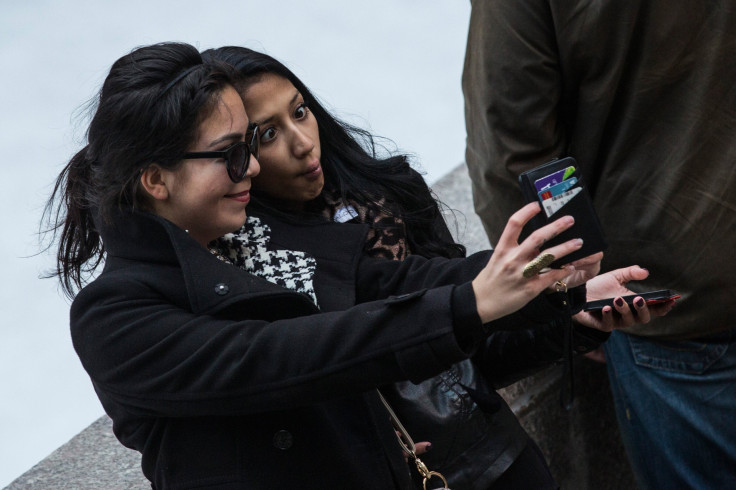Selfies Spread Lice? As Teens Go Back To School, Doctor Warns Against Head-To-Head Photos

A new school year means new opportunities to take selfies, but a doctor in Wisconsin is urging students to be careful. Pediatrician Sharon Rink told WIVB that she already has seen an increase in the number of teenagers coming in for treatment for lice, and she blamed the uptick on the selfie trend because it often requires people to lean closely together to fit in small cell phone frames.
"Teenagers don’t usually get lice because they’re not sharing hats and things like that," Rink said. "And lice can’t jump, so the only way they can transmit lice is touching their heads together, and that’s happening with all these photos.”
As students head back to school, she cautioned potential picture-takers to keep their heads a bit apart. Meanwhile, local pharmacist Jeff Cushman told WIVB that he has begun instructing parents whose children get lice to check their recent photos to see which friends their kids may have spread it to.
Getting lice -- insects that live on the scalp and are passed from person to person -- is common among toddlers and young children due to their close interactions with other kids. School provides another opportunity for this contact, as well as time for them to share hats, brushes and earphones without supervision.
I never knew you can get head lice from somebody just by taking a selfie or picture _
— Jay (@Jonay_Boo) August 24, 2015Another reason selfies are the dim of the world? Lice spreading from noggin to noggin when you cram in for the selfie. Yuck. #epicfail
— Jennifer Jacobus (@Kjacgirlie) August 22, 2015Wisconsin isn't the only state to see an increase in teen lice cases. Marcy McQuillan, the head of a lice removal service in San Francisco, told SFist in February she'd seen more affected high schoolers and college students than ever before. "Teens are sticking their heads together every day to take cell phone pics," McQuillan said. "Selfies are fun, but the consequences are real."
But others weren't so sure selfies were responsible. Deborah Altschuler, president of the nonprofit National Pediculosis Association, told the Huffington Post in 2014 that teens always have been at risk of lice. “It’s not new and it's not alarming. It just happens,” she said.
The best way for anyone to avoid getting lice is to stay away from head-to-head contact with others and not share personal items like scarves or hair accessories, according to the Mayo Clinic. Kids with long hair should keep it pulled back, and parents should regularly wipe down backpacks that hang on shared hooks in the classroom. Read more tips here.
© Copyright IBTimes 2025. All rights reserved.





















